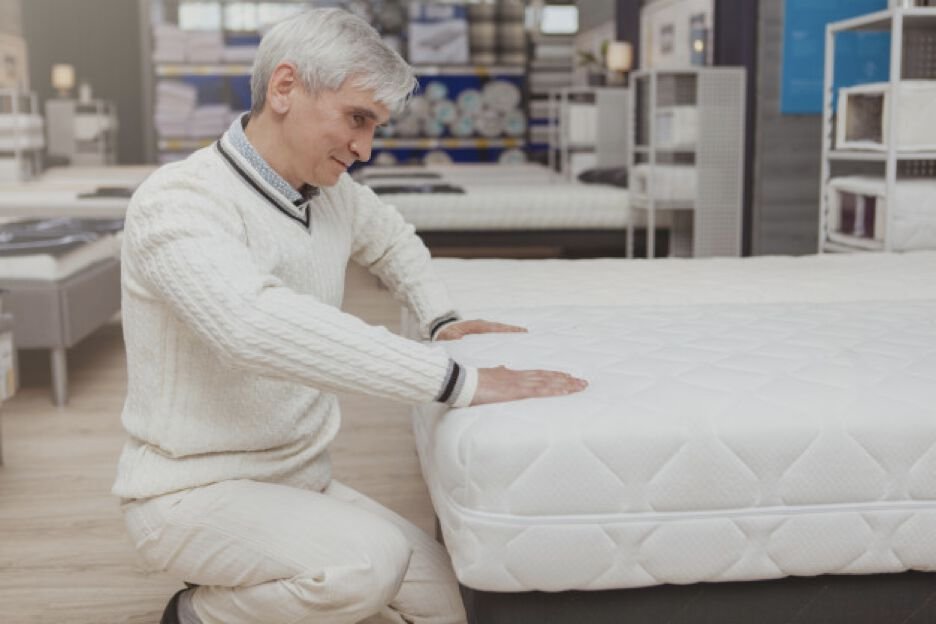Mattress Lifespan: How Long Should a Quality Mattress Last?
Your mattress serves as more than a nightly rest station; it is a cornerstone of sound health and daily productivity. A quality bed cushions the spine, eases tension, and invites rejuvenating sleep. Yet, like any well-used asset, a mattress has a finite life and eventually loses its ability to deliver dependable support.
As shoppers compare beds, they often weigh firmness level, material composition, and, inevitably, budget. For those willing to invest, a Best Luxury mattress UK promises craftsmanship and durability that stretch beyond the average. Alternatively, individuals living with back pain may find an orthopaedic mattress for back pain offers targeted resistance that curbs discomfort during slumber. This article reviews typical mattress longevity, identifies variables that shorten or extend it, and outlines clear signs that replacement is overdue.
Why Mattress Lifespan Matters
A supportive, comfortable mattress is a cornerstone of good health and restful sleep. Once a bed ages past its peak, even minor defects can lead to serious problems: restless nights, persistent back pain, and aching joints. Older mattresses also trap dust mites, mold, and bacteria, turning a supposedly safe sanctuary into an unseen health hazard. Whether you’re eyeing an upscale memory foam model or an orthopaedic design intended to ease spinal strain, knowing how long each style realistically lasts can guide a wiser, longer-lasting purchase.
What Happens as a Mattress Ages?
With years of use, even the finest components yield to gravity, humidity, and sheer friction. Signs vary by material, but most beds reveal their age in some predictable ways:
Loss of Support: Everyday pressure softens foam and fatigues coils, creating hollows where your body sinks. Sleeping on surfaces like these speeds spinal misalignment and morning stiffness.
Increased Allergens: Warm, dark interiors become breeding grounds for dust mites, bacteria, and mildew, aggravating respiratory allergies, asthma, and eczema.
Compression and Flattening: Cushioned comfort layers flatten and steel springs lose tension, leaving uneven ridges that poke or pinch through the night.
Odors and Stains: Over time, mattresses soak up sweat, natural skin oils, and ambient moisture, creating lingering odors and a less sanitary spot for nightly rest.
How Long Should a Mattress Last?
Mattress longevity varies widely, shaped chiefly by materials and the craftsmanship invested. The following lifespan estimates group beds by construction style:
- Memory Foam Mattresses
Quality memory-foam mattresses typically last 7 to 10 years. Thicker, high-density foam withstands compressive forces better than low-density foam, which may relent sooner.
- Innerspring Mattresses
Classic innerspring mattresses usually enjoy a service life of 6 to 8 years. Sagging occurs quickly if coils weaken or cushioning layers degrade. Models featuring pocketed coils and robust upholstery can go beyond the average.
- Latex Mattresses
Both natural and synthetic latex beds rank among the most durable. Natural latex often exceeds 10 to 12 years, with synthetic versions showing slightly shorter durability. Latex structure guards against sagging, delivering steady support through the decades.
- Hybrid Mattresses
Hybrid mattresses fuse innerspring coils with memory foam or latex layers, and they usually offer a lifespan of seven to ten years. How long they actually last depends largely on material grade and construction quality. The bed delivers solid support and decent pressure relief, yet it may wear out more quickly than a mattress made entirely of latex, or one built with higher-density memory foam.
- Airbeds (Adjustable Air Mattresses)
Adjustable-air beds contain inflatable chambers that allow sleepers to fine-tune firmness. Under normal use these models average six to eight years of service, but persistent air leaks or tears in the chamber can shorten that period and rob the bed of adequate support.
See also: Will Humans Merge With Machines by 2050?
Key Factors Affecting Mattress Lifespan
Although the materials used in a mattress set a crude expectation for durability, several additional variables shape its real-world lifespan. Here are a few worth noting:
- Quality of Materials
The overall grade of each component-whether coils foam or fabric-can have an enormous impact on longevity. For instance, a luxury mattress made in the UK features premium latex, firmer high-density foam, and reinforced innersprings, all of which together typically afford much longer service. When high-grade materials are paired with careful craftsmanship, a mattress is more likely to remain comfort-able and supportive well beyond the average benchmark.
2. Usage and Weight
jumping on the bed does more than shake the windows-it speeds up sagging. A mattress shared by two adults who crawl in night after night will wear out sooner than one that sits spare in a guest room. Heavier sleepers push deeper into the materials. Over time that added pressure can quicken the clock for foam, coils, and springs alike.
3. Care and Maintenance
A few straightforward habits can rescue precious months from an otherwise tired mattress. Flip it or spin it every three to six weeks, slide on a breathable protector, and vacuum the surface now and then. Those steps keep the fabric intact, shield the filling from spills, and remove the crumbs that invite pests. Support also counts-a sturdy platform, slatted base, or box spring stops early sagging.
4. Environmental Factors
Heat and moisture do more than spoil dinner-they can ruin a mattress too. Damp air feeds mold, while steamy summers and hot heating vents make foams brittle or sink too soft, Whisper-soft shades or curtains, a ceiling fan on low, and good ventilation draw heat and damp away.
Signs It’s Time to Replace Your Mattress
Even high-quality mattresses wear out after years of use. Consider the following indicators that signal it may be time for a new one.
- Sagging or Indentations
Noticeable sags or pronounced indentations mean the bed no longer supports your body evenly. This failing is especially troubling for back-pain sufferers, since an uneven surface can worsen spinal misalignment over time.
- New Aches and Pains
Regularly waking up with soreness in your back, neck, or joints suggests the mattress is letting you down. Such discomfort matters even more for people with existing pain conditions, who may find a good orthopaedic mattress a game-changer.
- Allergy Flare-Ups
If nightly sneezing, coughing, or breathing trouble rises, allergens hidden in the mattress may be to blame. Age softens fabric and traps dust mites, mold, and bacteria, steadily converting the bed into a breeding ground for irritants.
- Unpleasant Odors
Persistent, musty, or sour odors coming from your mattress are often clues that sweat, skin oils, and bacteria have gradually pooled inside the materials. Such smells are especially likely in older mattresses that have soaked up moisture over the years.
- Noise or Creaking Sounds
If your innerspring mattress squeaks or creaks whenever you turn over, the coils may be fatigued and failing to uphold you. Those little noises usually mean something inside has been damaged and the mattress is losing its structural integrity.
How to Choose the Right Mattress for Your Needs
When the time finally comes to swap out your mattress, picking a model that matches your body can profoundly affect your sleep and long-term health. Keep these straightforward guidelines in mind.
Support and Comfort
A good mattress should keep your spine straight while easing pressure where your joints meet the bed. Individuals with back pain often find that an orthopedic design delivers the firm, even support needed to encourage proper alignment throughout the night.
Mattress type
Think about what feels best to you each night before settling on a mattress. Memory foam gently hugs your shape, latex bounces back quickly and usually lasts longer, and a hybrid pairs sturdy pocket coils with cushy foam so you get support and softness at the same time.
Firmness level
How firm a mattress should be really depends on how you sleep. For side sleepers a little give eases pressure on the shoulders and hips, but back and stomach sleepers do better on a firmer surface that keeps the spine in line through the night.
Material quality
When you spend money on a new mattress, high-quality materials make the difference between a few years of use and a decade or more. A top-tier luxury mattress UK- retailers publish many examples- may cost more upfront, but its lasting comfort and sturdy build can save you money over time.
Warranty and trial period
Always read the fine print on warranty length and the trial period before you buy. A rock-solid warranty guards against hidden defects, while a generous trial window lets you test the mattress at home under your usual sheets and pillows to see if it really suits your body.
Conclusion: Investing in a Quality Mattress
Awareness of a mattress typical lifespan and the right moment for replacement is key to protecting both your health and daily comfort. Whether you choose a premier luxury bed in the UK or a specialist orthopaedic model designed for back relief, the upgrade can transform your sleep experience so you wake alert and ache-free. Make it a habit to examine your mattress, and once prominent tears, sagging, or persistent odors appear, simply replace it. Commit to this small yet meaningful investment, and enjoy deeper rest, stronger wellness, and lasting ease every night.
FAQS
How long should a mattress last?
Most mattresses last between 7 and 10 years, depending on the type and quality of materials.
2. How do I know when to replace my mattress?
Signs that it’s time to replace your mattress include sagging, visible indentations, pain upon waking, and the accumulation of allergens.
3. Is a luxury mattress worth the investment?
Yes, a Best Luxury mattress UK offers superior materials and support, making it a worthwhile investment for long-term comfort.
4. Can an orthopaedic mattress help with back pain?
Yes, an orthopaedic mattress for back pain provides firm support, helps align the spine, and can alleviate discomfort caused by poor sleeping posture.
5. How can I extend my mattress’s lifespan?
Rotate your mattress regularly, use a mattress protector, and maintain a clean and dry sleeping environment to extend its lifespan.
6. What is the best mattress for people with chronic pain?
An orthopaedic mattress for back pain is often the best choice, as it provides targeted support for the spine and pressure relief for painful areas.






